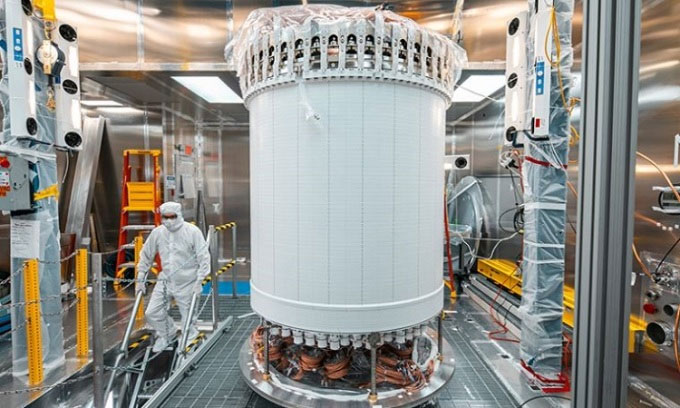The $60 million machine located beneath the Black Hills in South Dakota is set to explore the nature of dark matter, one of the greatest mysteries in physics.
Situated nearly 1.6 kilometers deep beneath the Black Hills mountain range in South Dakota, the LUX-ZEPLIN (LZ) experiment, operated by a team of 250 scientists led by the Lawrence Berkeley National Laboratory (Berkeley Lab), has successfully passed the testing phase during its startup. The mission of this machine is to detect dark matter particles for the first time.

LUX-ZEPLIN Dark Matter Experiment (LZ) at the Sanford Underground Research Facility in South Dakota. (Photo: UCL)
The LZ detector has been operational since December 2021. The results reflect the first 60 days of the machine’s operation. “We are ready, and everything seems to be working well,” said Kevin Lesko, the spokesperson for the LZ project and a physicist at Berkeley Lab. “This is a complex detector with many components, and they are all performing as expected.”
Dark matter makes up about 85% of the known matter in the universe, but because this type of matter does not interact with light, researchers cannot observe it. Similarly, any particles that constitute dark matter do not interact strongly with other matter. In fact, the only way scientists can infer the existence of dark matter is through its gravitational influence, which keeps stars from falling out of galaxies as they rotate. Researchers know that dark matter is not composed of photons and neutrons like ordinary matter.
The LZ detector is specifically designed to study a type of hypothetical dark matter called weakly interacting massive particles (WIMPs). WIMPs rarely collide with matter and interact extremely weakly if a collision occurs. Currently, scientists have not directly detected any dark matter particles, but they hope the LZ detector can change that by identifying interactions between WIMPs and xenon atoms. This requires a highly sensitive detector that eliminates all noise that could interfere with the detection process.
The xenon in the LZ experiment is contained within two titanium tanks holding 10 tons of the element in liquid form. These tanks are monitored by two photomultiplier tube (PMT) arrays to search for faint light sources. The tank and component detector are also situated within a larger detection system that can capture any particles resembling signals of dark matter and exclude them from the search for actual dark matter.
To detect weak interactions, the xenon tank must be maintained at -100 degrees Celsius. Additionally, the LZ research team must eliminate all natural background radiation from the detector. A water tank separates the experiment from the natural radiation emitted by the laboratory walls. The underground location of the dark matter detector helps protect the machine from high-energy photons and atomic nuclei traveling through space at nearly the speed of light, originating from the Sun and cosmic rays.
The sensitivity of the LZ detector will be enhanced over the next 1,000 days, indicating that this is just the beginning of the experiment. According to Hugh Lippincott, the LZ project spokesperson from the University of California, Santa Barbara, they plan to collect data 20 times more than in previous years.


















































